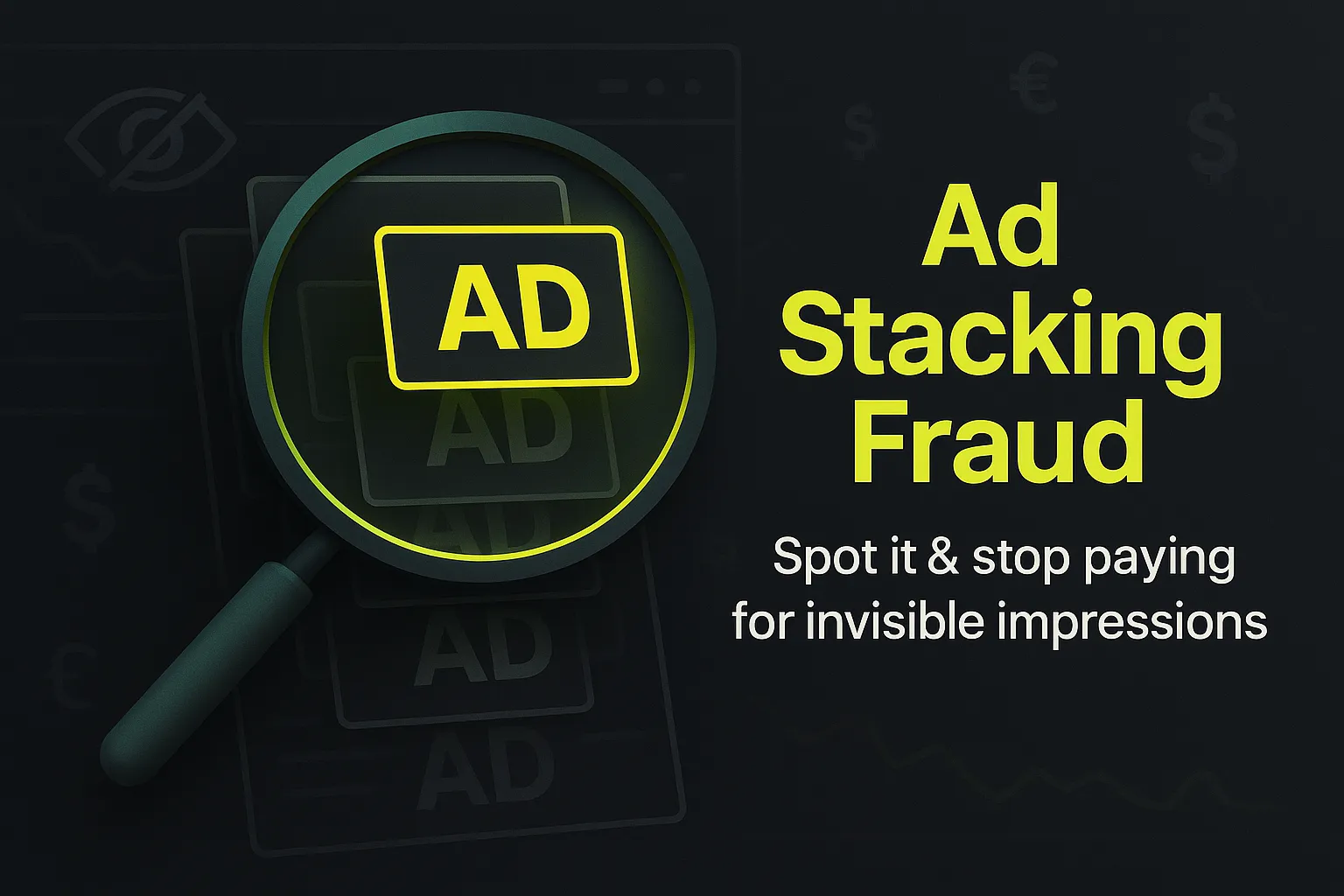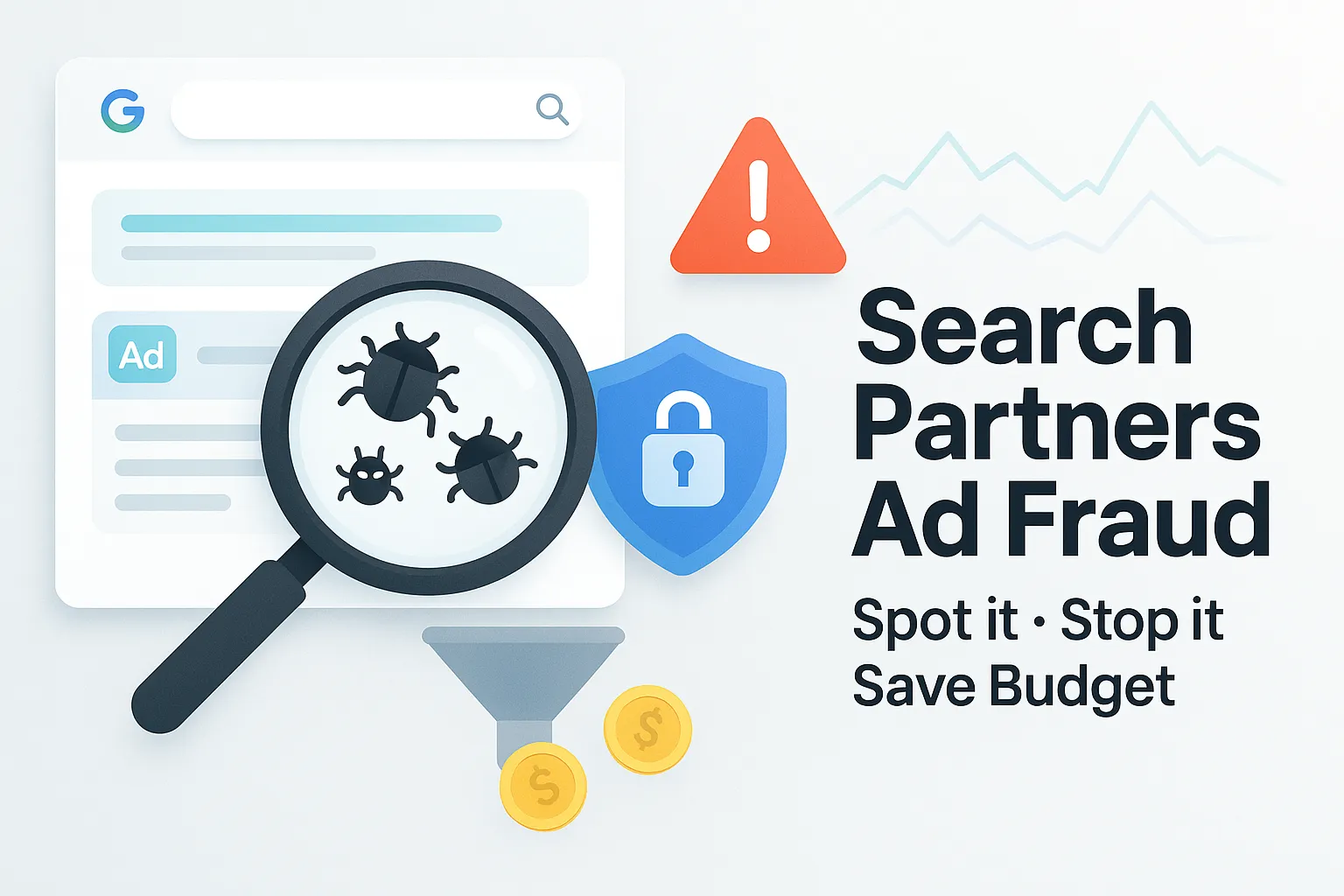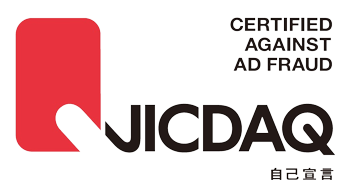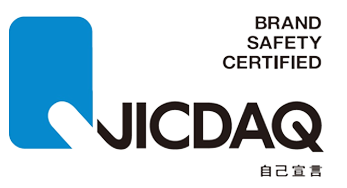Marketing Security: How to Safeguard Every Dollar of Your Growth Budget

Digital advertising will swallow more than $300 billion in U.S. spend this year, yet nearly one in five of those dollars never reaches a real customer. Bots click search ads, fraudsters stuff impressions into invisible iframes, and automated scripts flood CRMs with junk leads that skew every metric shown to the C-suite. The discipline that tackles these threats is called marketing security. Unlike general IT security, marketing security focuses on the attack surface created by media budgets, tracking pixels, and promotional pages. If you direct acquisition spend, the gap between protecting servers and protecting campaigns is now your most expensive blind spot.
The consequences stretch far beyond wasted budget. Fraudulent traffic poisons attribution models, inflates customer-acquisition cost, and pushes teams to invest in channels that actually lose money. Fake leads trigger sales-team burnout and damage email sender reputation. Privacy-law non-compliance can invite fines that dwarf the original ad spend. By 2025 the Association of National Advertisers estimates U.S. brands will lose $6.1 billion to ad fraud alone, more than the average Series B funding round. No marketer committed to sustainable growth can ignore numbers at that scale.
This guide provides a complete roadmap to marketing security. You will learn the seven dominant attacks targeting performance campaigns, the metrics that reveal hidden risk, and a week-by-week implementation checklist. We also compare leading platforms, highlighting how solutions such as Spider AF combine ad-fraud prevention, fake-lead filtering, and client-side script scanning in one workflow, and we link to real case studies that prove measurable return on investment. Follow the framework and you will protect revenue, improve data quality, and secure a new line item in next quarter’s budget dedicated to robust, growth-ready marketing security.
What Is Marketing Security?

Marketing security is a focused discipline that protects the money, data, and brand equity tied to paid-media and growth campaigns. It blends ad-verification technology, bot-detection analytics, privacy compliance, and front-end code hygiene to keep every click, impression, and lead legitimate. Where IT teams guard networks and servers, marketing security shields the customer-facing touchpoints that budget owners actually pay for—search ads, social placements, affiliate banners, tracking pixels, and landing pages. Done well, it preserves campaign ROAS, maintains accurate attribution models, and prevents regulatory fines for mishandled consent data. According to ANA research, brands that embed marketing security early see a median 15 percent lift in budget efficiency, because they stop paying for invalid interactions before optimization even begins. Modern stacks usually start with a specialty platform such as Spider AF, then layer on privacy scanners, tag managers, and server-side analytics to create an integrated control plane across every channel.
From Ad Fraud to Data Breaches: The Expanding Threat Surface
Fraud today is more than bots pumping fake clicks. Impression laundering hides ads in 1-pixel iframes, credential-stuffing gangs scrape promo codes, and malvertisers inject JavaScript that exfiltrates first-party data. Each tactic targets a distinct weak spot in the marketing stack, yet the damage converges on the same KPI dashboard: inflated spend, corrupted conversion rates, and exposure of customer PII. As omnichannel strategies add CTV, retail media, and influencer marketplaces, the attack surface grows wider and more automated. Marketing security programs map that surface, classify risks by dollar impact, and place real-time controls—blocklists, CAPTCHA challenges, and client-side script monitors—directly into the media flow.
Why Traditional IT Security Doesn’t Cover Marketing Risks
Corporate security policies focus on perimeter firewalls, endpoint devices, and SaaS logins, leaving ad platforms and analytics tags outside the enforcement boundary. A typical vendor pixel executes in the browser long after the page has passed security gateways, which means SOC teams often lack both visibility and ownership. Marketing campaigns also change weekly, introducing new landing pages and tags faster than IT change-control cycles can approve them. Without a purpose-built layer, threats slip through the cracks: ad-content spoofing is dismissed as “creative QA,” while bot traffic is mislabeled as a “site performance issue.” Marketing security closes that gap with domain expertise, media-centric telemetry, and SLAs measured against growth metrics rather than uptime alone.
Threat Landscape 2025: Top 7 Attacks Marketers Must Watch
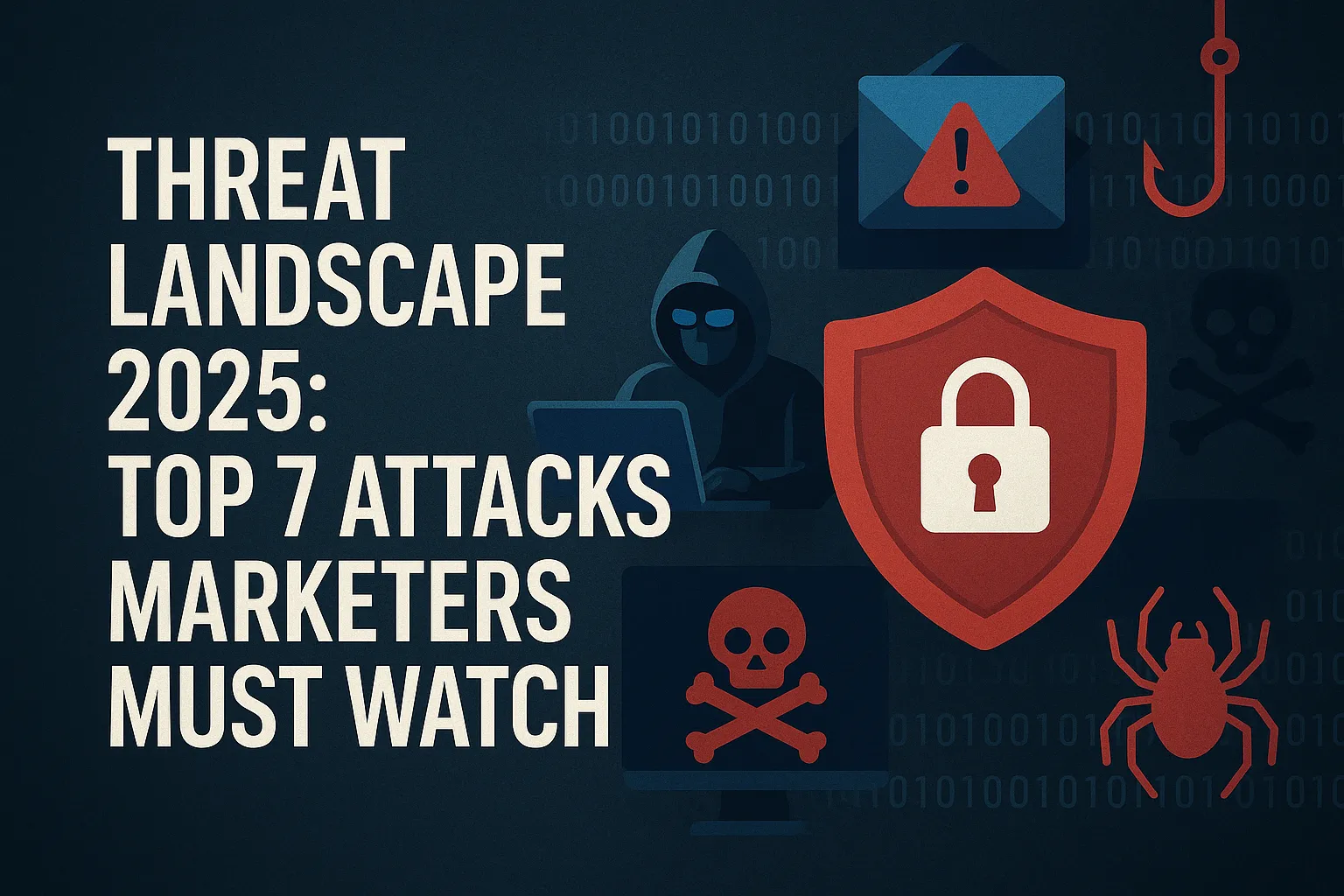
Click & Impression Fraud
Fraud farms and headless browsers now mimic sophisticated human‐like scroll, hover, and dwell patterns that bypass basic IVT filters. They drain budgets by generating millions of worthless impressions and CPC charges, then sell those “engagement” metrics back as proof of audience reach. Marketing security controls use device‐graph analysis, session entropy scoring, and pre‐bid blocklists to spot the subtle inconsistencies—impossible time-to-click, recycled user-agent strings, or traffic spikes localized to data-center ASN ranges—and shut off spend before invoices are finalized.
Bot-Driven Fake Leads
Credential-recycling bots scrape email formats from LinkedIn, then auto-submit gated-content forms to harvest free trials, ebooks, and discount codes. These bots inflate MQL counts, poison lead-scoring models, and waste SDR hours on callbacks that end in dead air. Advanced marketing security suites fingerprint behavioral signals (typing cadence, paste events, IP reputation) at the form layer, reject low-quality submissions in real time, and feed negative feedback loops into CRM so sales productivity metrics remain intact.
Pixel Stuffing & Ad Stacking
Fraudsters hide a full stack of ads under a single 300×250 placement or compress them into a one-pixel iframe, charging multiple impressions while the user sees none. This practice skews viewability rates and siphons budget from premium inventory. A robust marketing security program deploys JavaScript tag scanners and viewport-level audits that detect off-screen rendering, invisible opacity settings, and unusual DOM nesting, then automatically issues claw-back claims to SSPs and exchanges.
Credential Stuffing on Promo Pages
Attackers test leaked username-password combos against “refer-a-friend” portals, cart login forms, and loyalty dashboards, seeking gift-card balances or saved credit cards. Because promo endpoints sit outside core auth infrastructure, IT teams rarely monitor them closely. Marketing security adds WAF-grade rate-limiting, behavioral anomaly detection, and reCAPTCHA v3 scoring directly to campaign microsites, stopping takeover attempts before customer goodwill turns into chargebacks and brand-equity loss.
Coupon & Loyalty Abuse
Automated scripts brute-force sequential coupon codes or replay “first-purchase” offers through disposable email accounts, eroding margin and skewing A/B test results. Effective marketing security pipelines track redemption velocity, device fingerprint uniqueness, and suspicious geolocation clusters, then dynamically throttle or invalidate exploits. Finance teams finally see accurate discount ROI, while marketers preserve promo credibility with genuine shoppers.
Malvertising & Brand Hijacking
Compromised ad slots can inject drive-by downloads, fake antivirus pop-ups, or look-alike landing pages that steal credentials. The fallout: emergency takedowns, PR crises, and lost conversion trust. Modern marketing security integrates creative-verification sandboxes and domain-spoof detection, quarantining malicious ads before they render and issuing takedown notices through Trust & Safety channels so the brand never appears on a blacklist.
Data-Privacy Compliance Gaps (GDPR/CCPA, etc.)
Each third-party pixel and analytics SDK exported from a tag manager risks leaking personal data across borders without consent. Regulators now levy multimillion-dollar fines for vague cookie notices or silent fingerprinting. A disciplined marketing security workflow inventories every script, maps data flows, and enforces regional consent logic, ensuring U.S. campaigns remain compliant while EEA visitors see law-aligned opt-in journeys.
The Marketing-Security Framework
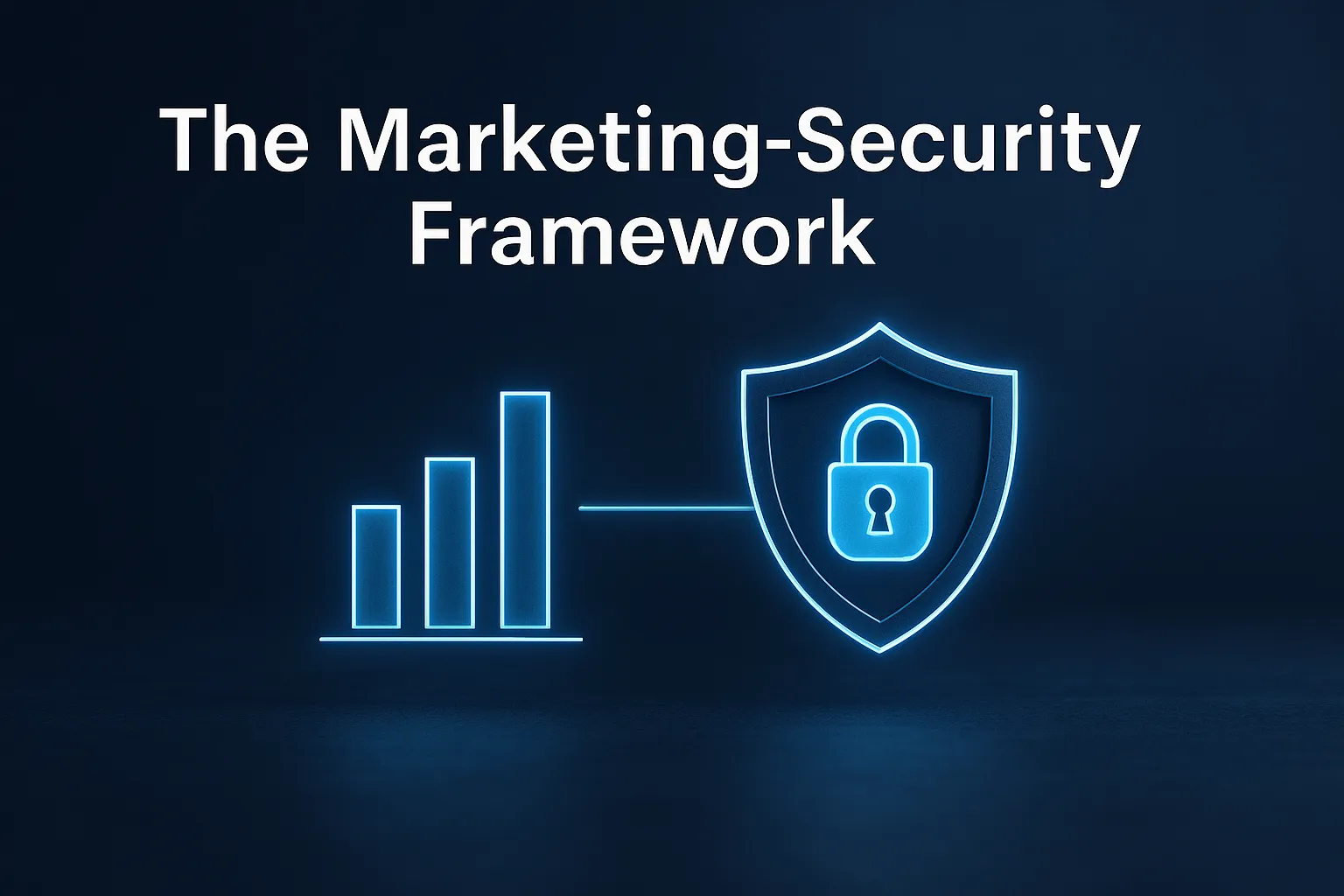
Modern marketing teams need a repeatable, budget-friendly process that slots neatly into existing campaign cadences. We recommend a four-step loop — Assess ▸ Prevent ▸ Monitor ▸ Iterate — because it mirrors how media budgets are planned, launched, and optimised each quarter.
- Assess – baseline the risk
- Pull 30 days of raw log data from your ad platforms and analytics.
- Compare “effective impressions” (ads actually seen by humans) to gross impressions. The ANA’s Q1 2025 Programmatic Benchmark shows that, on average, only 41 % of programmatic impressions reach real consumers — a stark starting point for most brands.
- Segment traffic by network ASN, device ID freshness, and geography to isolate likely bot clusters.
- Prevent – activate protective controls
- Deploy an ad-fraud filter such as Spider AF at the campaign level; its block-list API stops invalid clicks before they hit the site, while Fake Lead Protection validates form interactions in real time.
- Add SiteScan (client-side security) to crawl landing pages and detect hidden scripts or pixel-stuffing iframes before launch.
- Configure consent banners to fire marketing pixels only after user opt-in; this both limits data leakage and keeps you clear of GDPR/CCPA fines.
- Monitor – keep humans in the loop
- Stream granular IVT, invalid-lead, and script-scan alerts into a single dashboard with SLA-based escalation to the growth team.
- Track anomaly signals (e.g., 10 × spike in conversions from a single subnet) and cut spend automatically via API if thresholds trip during a flight.
- Iterate – optimise for ROI, not just “cleanliness”
- A/B-test new block-list rules monthly; reinvest the dollars you free up into the highest-ROAS audiences.
- Feed back validated conversions to ad platforms so their bidding algorithms learn which impressions are truly valuable.
Key Metrics: How to Prove Marketing-Security ROI
Focus on these five numbers and you’ll have the evidence the CFO needs to renew (or expand) your marketing-security budget in 2026.
Case Studies & Proof of ROI
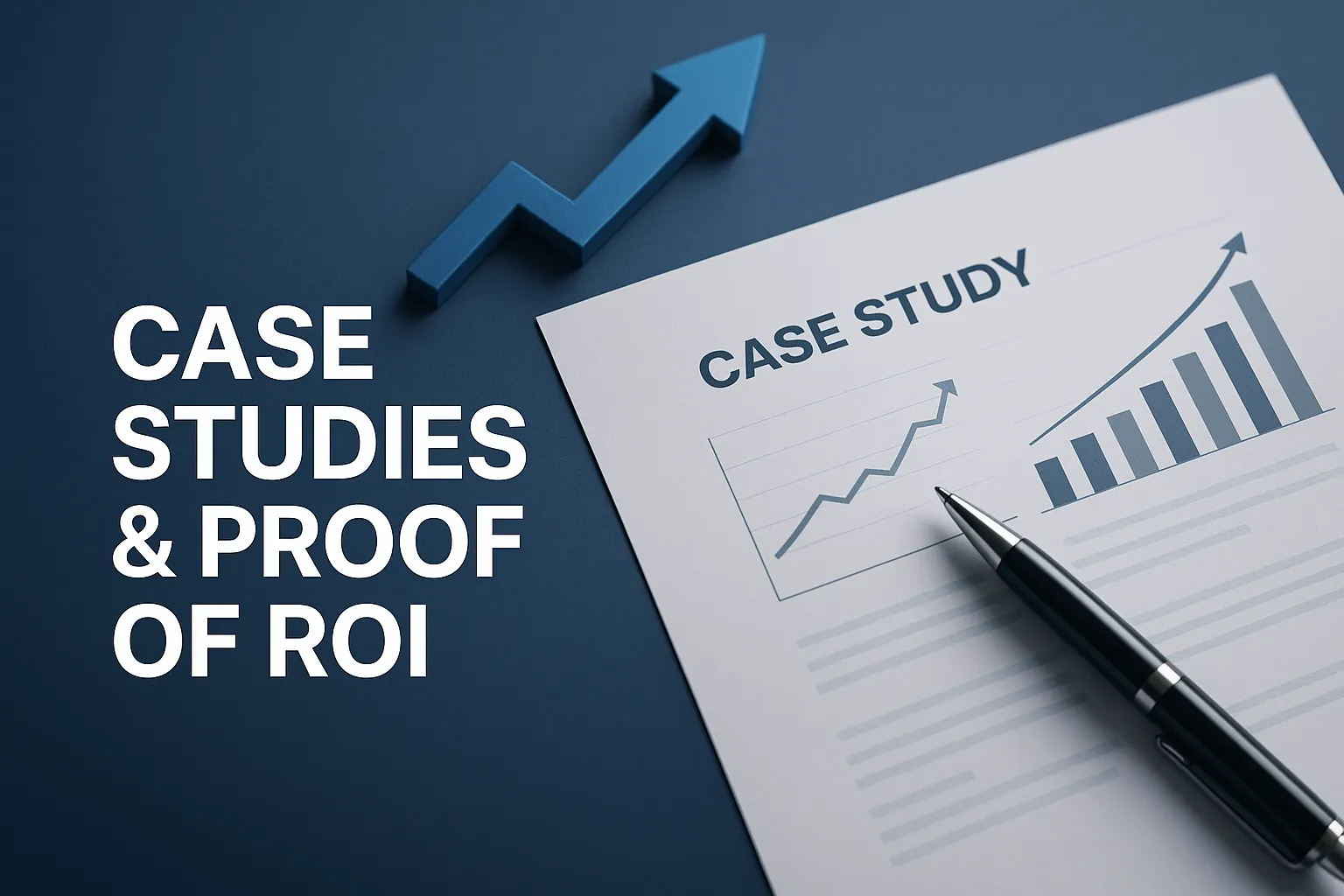
E-commerce Retailer Cuts Bot Traffic 42 % and Lifts ROAS 28 %
A U.S. fashion marketplace that was bleeding budget on Meta retargeting deployed Spider AF’s Ad-Fraud Protection pixel across its checkout funnel. In 30 days the system flagged 2 million non-human sessions, blocked them pre-bid, and trimmed total bot traffic by 42 %. Marketing re-allocated the recovered spend to high-intent look-alike audiences and saw an immediate 28 % jump in ROAS month-over-month. The team now screens every new campaign through Spider AF’s traffic-audit report before launch, making clean data a hard KPI for media approval.
B2B SaaS Firm Saves $154,200 in Six Months by Blocking Fake Leads
Singapore-based performance agency OOm Pte Ltd manages paid acquisition for dozens of SaaS clients. After P-Max and display placements flooded CRMs with bot sign-ups, OOm rolled out Spider AF Fake Lead Protection across all accounts. In just six months the platform stopped 143,947 invalid clicks, kept average IVT at 3.73 %, and documented $154,200 USD in hard cost savings—results that were strong enough to land in the agency’s new-business pitch deck.
Local Services Brand Slashes Invalid Clicks 90 %—From Burn-Through to Profit
A Vienna locksmith was watching Google Ads budgets vanish within minutes, with zero calls to show for it. During a two-day free trial the owner saw Spider AF identify whole botnets masquerading as mobile users. After full deployment, invalid clicks fell by 90 %, CPA dropped to €12, and the business scaled from 14 to 17 active campaigns without increasing spend—proof that even a one-person company can win big when marketing security is baked into the stack.
Vendor Comparison: How Top Platforms Tackle Marketing Security in 2025
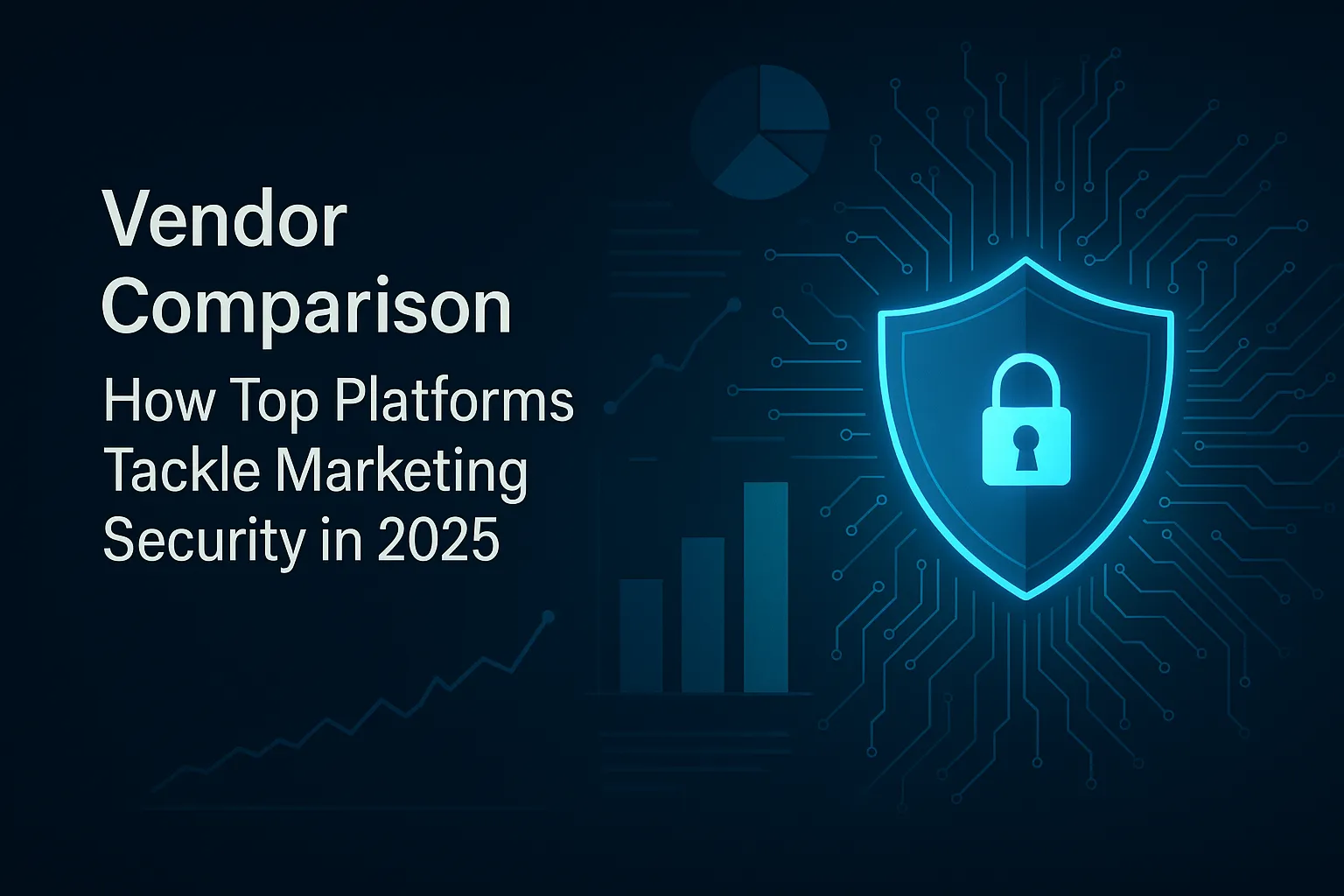
A side-by-side look at leading solutions shows just how dramatically feature depth and go-to-market strategies vary. We examined five vendors that collectively protect more than $100 billion in annual ad spend. Spider AF is the only suite purpose-built for marketers—with ad-fraud blocking, Fake Lead Protection, and SiteScan client-side script security all managed from one UI. CHEQ, HUMAN Security, and DoubleVerify offer strong bot-mitigation or verification layers, but each requires extra point tools (or paid modules) to equal Spider AF’s full-funnel coverage. Oracle’s Moat, once a staple of viewability measurement, is now sunset after Oracle closed its ad-tech division in September 2024, forcing former users to migrate.
Below is a condensed comparison; the narrative that follows explains why certain columns matter to mid-market growth teams and how to translate line-item differences into hard-dollar ROI.
Why These Columns Matter
- Pricing Model affects scalability: flat SaaS fees (e.g., CHEQ) are predictable for smaller budgets, while Spider AF’s tiered structure keeps marginal cost near zero once spend crosses $20 k/month.
- Setup Time maps to campaign velocity; if you launch new offers weekly, pixel-level onboarding in hours saves more than any per-impression discount.
- Native Integrations dictate data fidelity. Spider AF’s GA4 custom-dimension sync pushes clean conversion events back into bidding algorithms—a feature absent in most “verification-only” stacks.
- Support/SLAs translate into claw-backs and CFO-grade proof. DoubleVerify’s MRC accreditation is a plus for global brands, but smaller growth teams often prefer Spider AF’s monthly ROI sheets because they convert tech jargon into budget justification.
In short, choose a platform whose road map aligns with how you buy media. If you need turnkey protection from click to lead to on-page script, Spider AF is the most consolidated—and therefore the least operationally expensive—option on the board.
Implementation Checklist (Week-by-Week Plan)
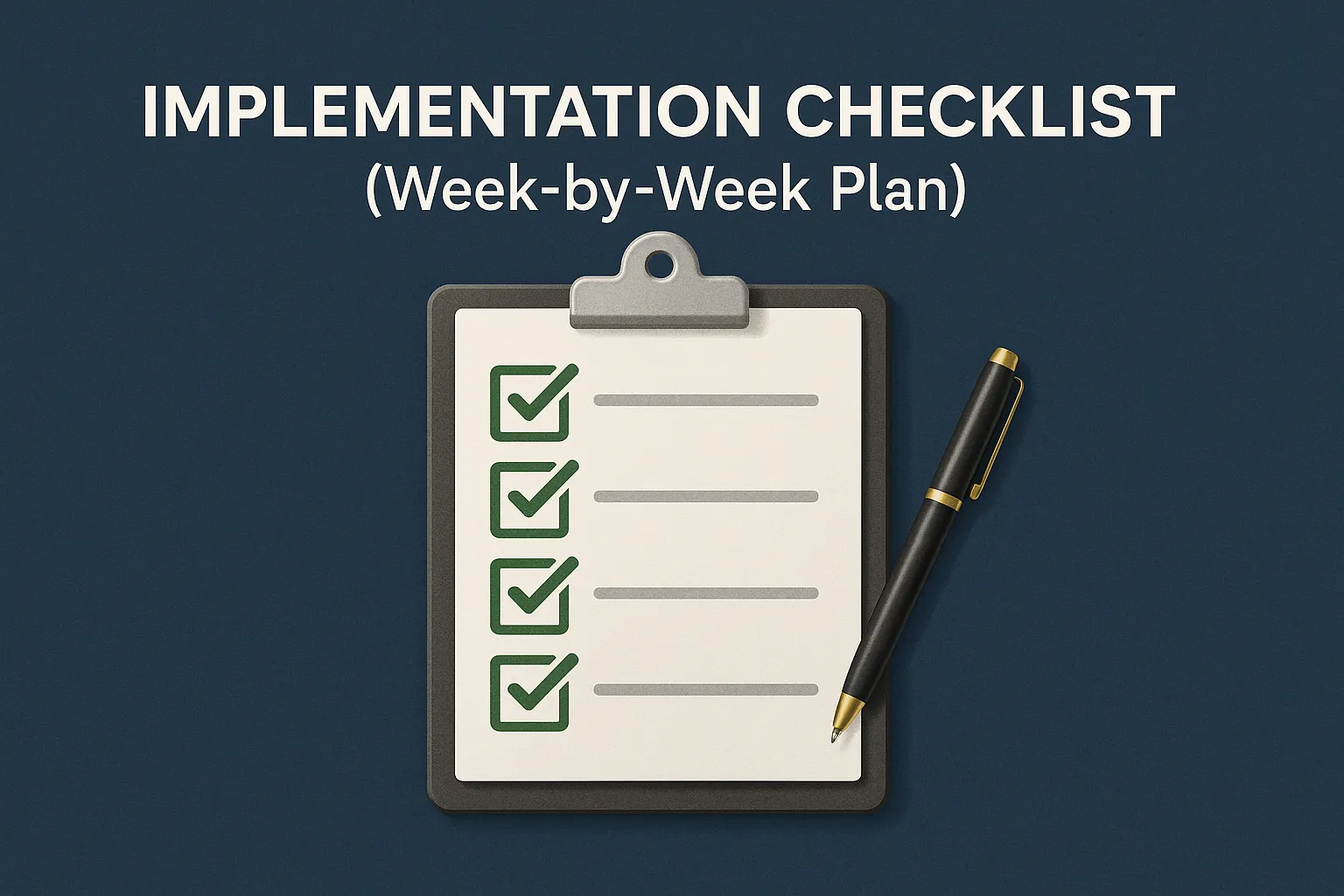
Week 1 — Traffic Audit & Baseline
Pull the last 30 days of raw logs from every ad platform, analytics suite, and CRM. Feed them into a spreadsheet or BI tool and calculate invalid-traffic share, cost of fraud, and conversion-quality ratios. Flag any channel with IVT above 10 % or sudden spikes in “new device IDs.” Use Spider AF’s free traffic-scan to fingerprint bot clusters before you touch live campaigns. The goal is a documented baseline that executives can compare against future lift; without that benchmark, every downstream ROI claim will be questioned during budget reviews.
Week 2 — Tool Selection & Procurement
Map your threat gaps to vendor capabilities: ad-fraud blocking, fake-lead filtering, client-side script scanning, or privacy-consent enforcement. Short-list two vendors and run 48-hour POCs on duplicate campaign samples. Evaluate not just block-rate but dashboard usability, export formats, and GA4 or CRM integrations. Present a cost-benefit sheet to finance showing projected savings versus license fees, citing Spider AF’s bundled suite as a reference point. Secure purchase approval and legal review by end of week so tech teams can move straight to pixel deployment.
Week 3 — Tagging, Pixel Placement & QA
Implement the selected platform’s tag (or server-side endpoint) across search, social, display, and landing-page templates. Use your tag-manager preview mode to confirm firing order: consent banner → analytics → fraud-detection pixel. In staging, simulate both human and scripted visits to validate blocklists and lead-scoring thresholds. Coordinate with paid-media specialists to pause bid rules for 24 hours if anomaly alerts spike during go-live. Spider AF users should enable real-time Slack or Teams notifications so campaign managers see invalid clicks within seconds, not in next week’s Excel report.
Week 4 — Reporting Cadence & KPI Governance
Schedule automated exports of IVT%, cost-of-fraud savings, and conversion-quality scores into your BI dashboard. Align these with marketing’s regular performance review so fraud metrics sit beside CPA and ROAS, not in a silo. Draft an escalation playbook: if IVT climbs above 8 % in any channel, the media owner must adjust targeting or creative within 48 hours. Include finance in the loop so recovered spend can be re-allocated instead of lost to “unused budget.” Finally, share a one-page victory recap—complete with Spider AF claw-back figures—to leadership; celebrating quick wins ensures long-term resourcing for marketing security.
Common Mistakes to Avoid
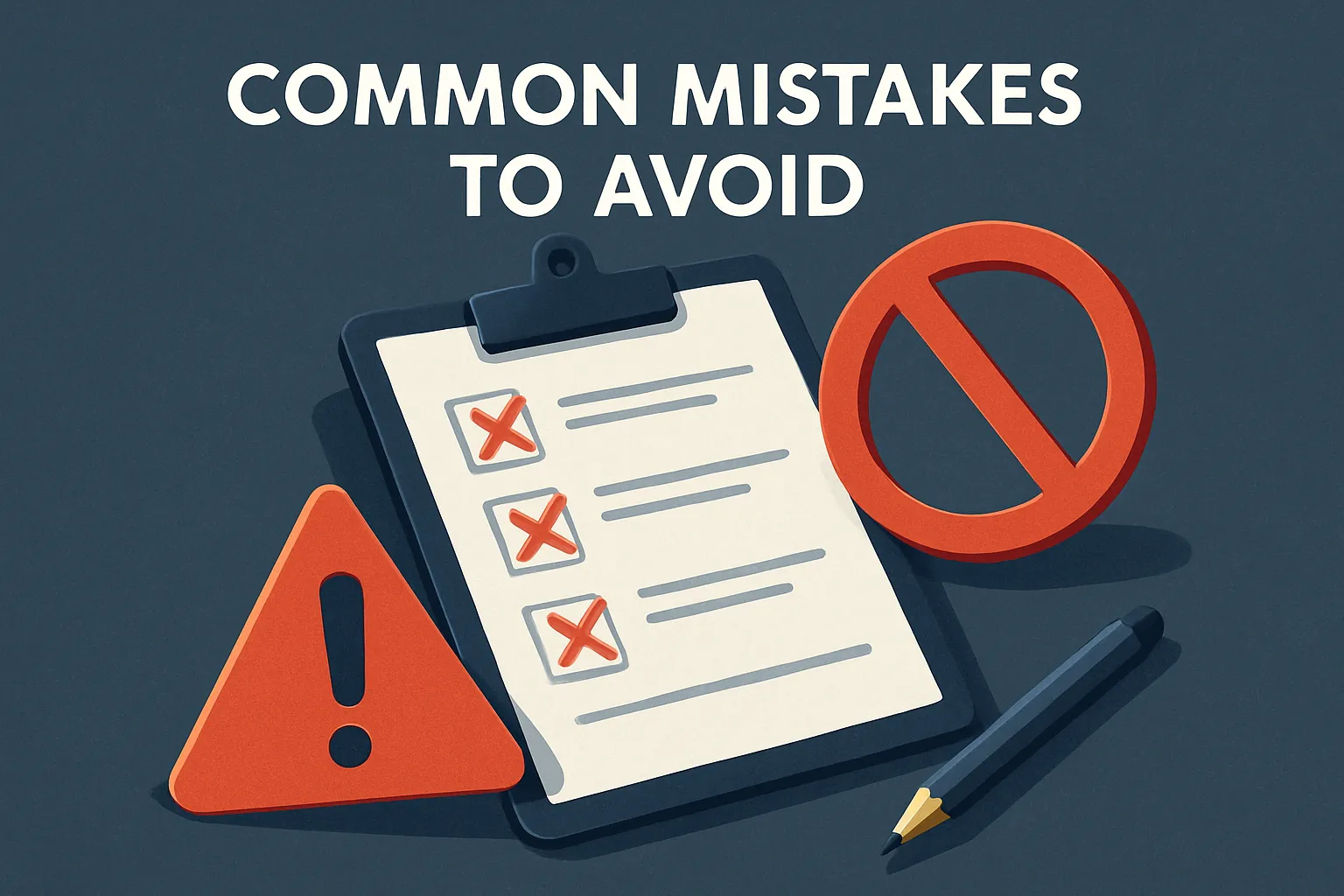
Even the smartest growth teams slip up when they first roll out marketing security. Below are three costly habits we see again and again—and how to fix them before they drain another dollar.
Relying Solely on Platform Filters
Google Ads, Meta, and other walled gardens do run multilayer invalid-traffic (IVT) screens, but they credit you only after fraudulent activity is detected post-invoice. In practice that means bots burn through budget for days (or weeks) before any make-good appears, and many subtle IVT patterns go unflagged entirely. A dedicated marketing-security layer—pre-bid blocklists, device-graph scoring, real-time form validation—halts the junk before it ever hits your campaigns, so CFOs see savings in the current reporting period, not the next one.
Ignoring Mobile-App Traffic
Mobile app install networks remain a playground for sophisticated spoofing, yet web-focused teams often exclude app-attribution logs from their fraud checks. AppsFlyer’s 2025 fraud guide puts wasted mobile-media spend at 15 percent globally, driven by install farms and SDK spoofing that never surface in browser analytics. Extend your marketing-security tooling to in-app events, enable on-device SDK validation, and cross-reference install IDs against known bot fingerprints to keep UA budgets honest.
Underfunding Post-Launch Monitoring
Many brands treat marketing security as a one-and-done implementation cost—drop the pixel, tick the box, move on. Yet Spider Labs’ 2025 Ad Fraud Report shows global losses still climbed to $37.7 billion last year, largely because attackers iterate within hours of new defenses going live. Budget at least 5-10 percent of monthly media spend for ongoing threat-intel updates, rule-set testing, and alert-driven optimizations. Without that continual funding loop, even the best tools degrade, and fraudsters reclaim their foothold.
Conclusion & Next Steps

Marketing security is no longer a “nice to have.” ANA’s Q1 2025 benchmark proves that only 41 % of programmatic impressions reach real humans—meaning the average U.S. brand still wastes almost 60 % of its media budget before optimisation even starts. Add in the 15 % of global mobile spend that AppsFlyer says disappears inside app-install fraud, and the stakes climb higher still.
The four-step framework you just read—Assess, Prevent, Monitor, Iterate—gives you a proven way to close that gap. Case studies show the upside: agencies running Spider AF blocked 143,947 bogus clicks and banked $154 k in savings within six months, while small businesses like a Vienna locksmith slashed invalid clicks by 90 % and cut CPA to €12. Globally, Spider Labs’ 2025 Ad Fraud Report still tallied $37.7 billion in digital ad losses last year, so the window for action is wide open.
Your next move:
- Run a no-cost traffic audit with Spider AF to benchmark IVT, fake-lead volume, and hidden scripts.
- Activate protection—Ad-Fraud Prevention blocks junk clicks pre-bid, Fake Lead Protection filters form spam in real time, and SiteScan checks every tag for pixel stuffing.
- Feed clean conversions back to GA4 and ad platforms so bidding algorithms learn from real humans, not bots.
- Review the dashboard weekly; if IVT rises above 8 %, pause the offending placement and recycle the budget into high-ROAS audiences.
Ready to protect every dollar of your growth budget? Start your 14-day Spider AF trial today and see instant, board-level ROI.
👉 Start now with a free website security check to evaluate your site’s browser-side risks.











